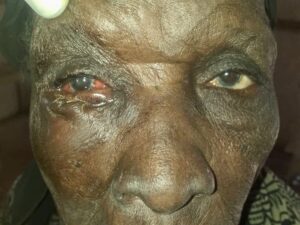Progress towards eliminating trachoma as a public health problem in Mali has accelerated in recent years due to the increase in actions developed towards this objective and has culminated in this fantastic news from the World Health Organization.
Mali’s National Eye Health Programme has included a plan against trachoma since 1998 that applies the SAFE strategy endorsed by the WHO. Its Ministry of Health has had to deal with a complex operating environment to concentrate efforts to eliminate trachoma as a public health problem. For this, it has had the support of various collaborators, such as Eyes of the world.

Trachoma is an infectious eye disease that can cause irreversible opacities, with consequent visual impairment and even blindness. This pathology causes the people who suffer from it, primarily those who work in rural areas, to be unable to continue their tasks, and their marginalization is accentuated. Hence, the Foundation was involved in trachoma eradication projects, specifically in the Mopti region.
The SAFE strategy against trachoma, in addition to contemplating education on hygiene habits to avoid spreading the disease, antibiotics, and surgeries, also appeals to the need to invest in means to promote environmental improvement. For this reason, since it arrived in Mali in 2008, Eyes of the world has worked on tasks such as the training of professionals in ophthalmology and the supply of antibiotics; has led both awareness campaigns and surgeries and has carried out projects to strengthen access and quality of drinking water and improve sanitation.
This is great news and may serve as an example for other countries to achieve the global goal of eliminating trachoma as a public health problem by 2030. But we must not forget that there is still a long way to go in other pathologies with a high incidence in the area, such as cataracts.